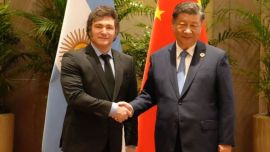Four Latin American countries held presidential elections in 2021: Ecuador, Peru, Honduras and Chile. Barring the first, which was won by right-wing leader Guillermo Lasso, the successful candidates in the other three belonged to left-wing parties, coalition or fronts, whose governments will join other existing left-wing presidencies in the region. In this year that is now beginning, the eyes will be on three key electoral processes: first in Costa Rica and then, with even more focus, in Colombia and Brazil, where once again the most progressive options are currently leading in the polls. Will 2022 be the year in which the left consolidates itself in Latin America?
The past year will be remembered as a marathon year in electoral terms for the region, with victories by leftist leaders Pedro Castillo in Peru and Gabriel Boric in Chile. In this way, the successive victories of these candidates seem to demonstrate a period of consolidation of the left in Latin America, which began in 2018 with the arrival in power of Andrés Manuel Lopez Obrador in Mexico, followed by centre-left leader Laurentino Cortizo in Panama in 2019, and Luis Arce in Bolivia in 2020.
And 2022 could be the year of the culmination of the ideological pendulum, especially with upcoming elections in Colombia and Brazil. In the former, current polling shows Gustavo Petro, the economist and former mayor of Bogotá who has a militant and guerrilla past, could put an end to current president Iván Duque’s four years of Uribismo, albeit in a likely second round run-off. A Petro victory would not only add another country to the chessboard of nations governed by leftist leaders, it would also be unprecedented: it would be the first time that a candidate with this ideological stance has been elected president of Colombia.
In Brazil, the presidential election due in October is focused on the two main candidates: former president Luiz Inácio Lula Da Silva and current president Jair Bolsonaro, who is seeking re-election. According to the surveys, the race could be settled in a possible run-off on October 30 with a possible victory, according to the latest figures, projected for the veteran Workers’ Party (PT) candidate.
\\But does this consolidation of the left mean ideological and programmatic unity? Not necessarily – while it is true that the president of Peru and the president-elect of Chile, to name but two cases, both claim to be left-wing candidates, there is no total homogeneity in their visions, values and public policies. While Pedro Castillo is suspected of having links with Sendero Luminoso (Shining Path) and Petro is a former M-19 guerrilla, Chile’s incoming leader Gabriel Boric has repeatedly spoken out against political violence and, on the contrary, is probably closer to López Obrador than to Castillo and Petro.
On the other hand, while Chile's president-elect wants to move towards a greater recognition of social rights, especially for minorities and dissidents (as was the case with Lula in Brazil), Pedro Castillo remains an absolutely conservative personality on these issues. However, there is also a curious similarity between several of these new leftist figures, especially Boric and Petro: both have positioned themselves politically as relevant actors after social uprisings in their countries and represent an exhaustion with the political class in both their nations. And in terms of international cooperation, there is also a link that cuts through: most leftist governments have expressed their interest in deepening productive and technological ties with China.
What are the causes of this potential consolidation in the region? Firstly, the ideological process in Latin America is a swinging pendulum and it should come as no surprise that after several governments linked to right and centre-right positions, citizens are turning towards the left again. But there are also other factors in the region which allow us to understand why candidates with proposals that differ from incumbent governments are winning.
To begin with, many consultancy firms are reporting the existence of discontent in society, especially in the middle classes, with regards to the handling of the pandemic by various governments, many of them right-wing. This applies especially to the cases of Bolsonaro and Duque. In the wake of the Covid crisis, a growing number of citizens are demanding greater social safety nets be installed to deal with the pandemic and a greater state presence all-round, policies usually promised by left-wing candidates on the campaign trail.
Moreover, and as an additional consequence of the pandemic, Latin America is going through a period characterised by an increase in inequality in both socio-economic terms and a huge gap in access to vital entitlements such as vaccines against the coronavirus. In terms of poverty, a recent CEPAL/ECLAC report (from 2021) revealed that 33.7 percent of Latin America’s population is poor and that 40.7 percent suffers from serious or severe food insecurity – figures which have been growing since 2017.
In some cases, these socio-economic crises dating back some years ago have led to social outbreaks of unrest, as happened in Peru, Colombia and Chile, where those in power ended up with approval ratings hovering around historic lows, as in the case of Sebastián Piñera. Criticism of right-wing governments led not only to social unrest but also to the questioning of traditional leaderships, which gave rise to the emergence of new figures who emerged to challenge the existing structures.
If the forecasts come true, there will be a shift from the right to the left in at least four countries in the space of just a few months: Honduras, Chile, Colombia and Brazil. But above all, we must look not only at the number of countries that will turn left, but also at their relative weight in the region’s political configuration, especially in the case of Brazil. Will these new governments be able to meet the expectations of a society dissatisfied with the existing political class? While we will have to wait a few months to find out, it is difficult to forecast what comes next. The new presidencies face a complex social situation with poverty levels at their highest point in the last two decades, while the price of raw materials that were booming 20 years ago and allowed progressive governments to implement interventionist policies are now suffering the consequences of a global production crisis.
* Graduate in Political Sciences (UCA). Researcher at the Catholic University of Argentina’s Centre for International Studies (CEI-UCA).























Comments